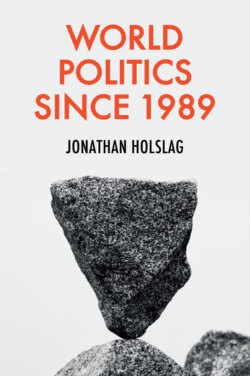Читать книгу World Politics since 1989 - Jonathan Holslag - Страница 23
Security
ОглавлениеEconomic uncertainty is an incubator of insecurity. It is often argued that the world has never been safer than during the high age of globalization. This is correct. In many countries, the homicide rate, which is the number of murders compared to the total population, decreased. Compared to the brutally violent first half of the twentieth century, fewer people were killed in wars. In absolute terms, however, the number of people killed by violence slightly increased, particularly between 2010 and 2019 (figure 1.9). Organized crime, rebellion, and terrorism infested large parts of the world. There can be discussion about the degree to which, for instance, murders and terrorist incidents are now more frequently reported. The fact remains that over half a million people were killed by violence each year. In relation to the population, the death rate dropped. Yet still, many people lived in the dark shadow of endemic violence.
Figure 1.10 shows that globalization has not advanced security throughout the world. Between 1990 and 2004, the number of armed conflicts decreased, but rebounded in the following 15 years. The number of wars remained small. The most lethal wars were those in the Democratic Republic of Congo, Rwanda, Syria, Sudan, Afghanistan, and Iraq. Many of these conflicts were protracted and lasted many years, so that international attention diminished. Highlighting the increase in conflict is the number of forcibly displaced people. These include refugees and people who are forced to leave their home but remain inside the country. Between 2004 and 2017, the number of forcibly displaced people more than doubled. The majority were located in Africa and the Middle East.
Figure 1.10 Number of armed conflicts (left axis) and forcibly displaced people (million, right axis)
Note: Major wars have at least 1,000 battle-related deaths.
Source: UCPD.
Global military spending, calculated in constant American dollars, also bounced back to Cold War levels (figure 1.11). Most countries reduced the number of soldiers, but spent much more on modern weapons systems. The United States intervened in Afghanistan and Iraq. The Western global war on terror became one of the most expensive military campaigns in recent history. Russia used military force to repel the West from what was left of the Soviet sphere of influence. China embarked on a massive military build-up to drive the United States out of its adjacent seas. Thousands of ballistic missiles were deployed as a cheap deterrent against US naval prowess. Major geopolitical tensions resurfaced between close trading partners, like China and the United States, and Russia and Western Europe.
Figure 1.11 Global military spending (constant US$ bn)
Source: SIPRI.
